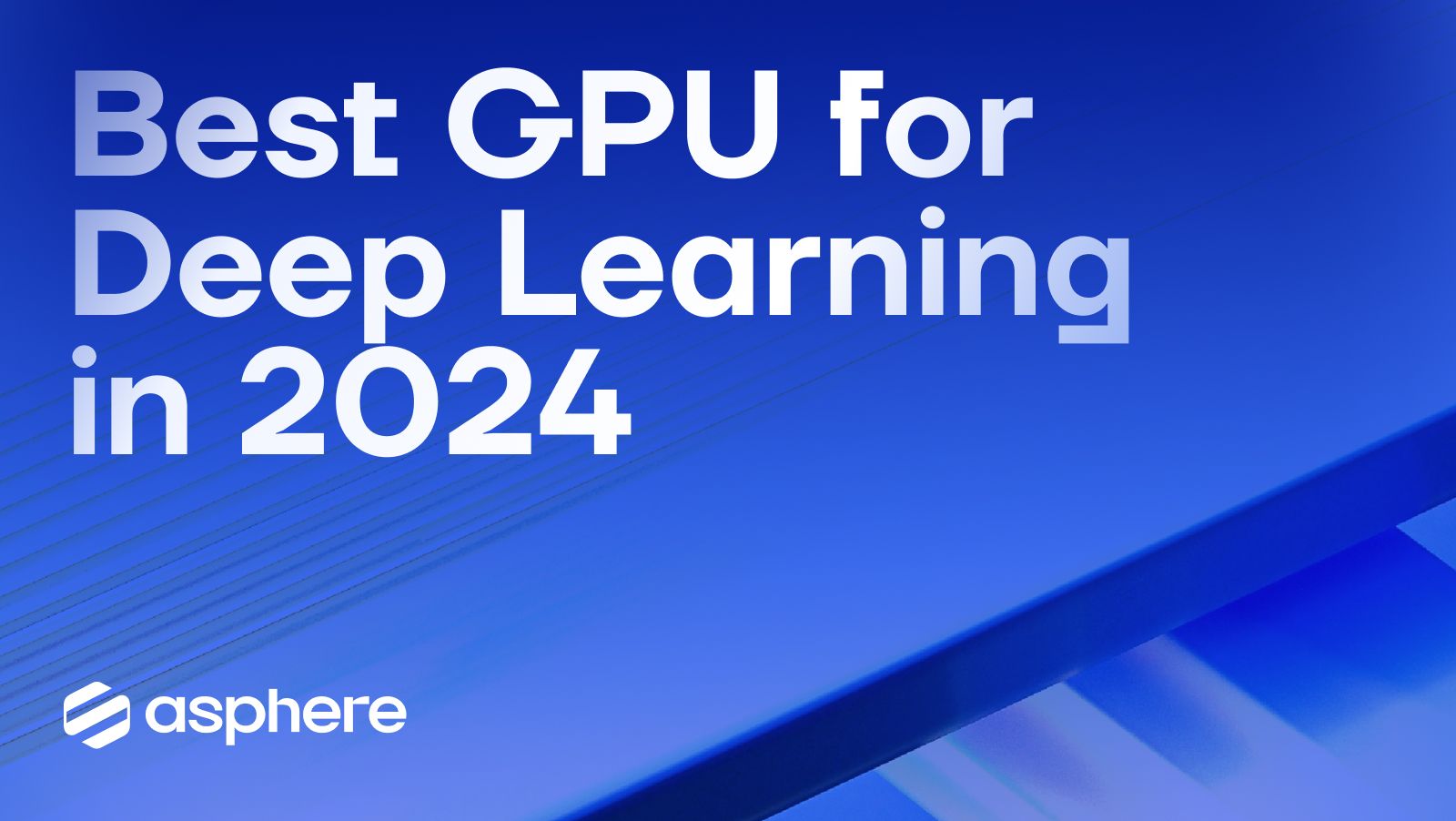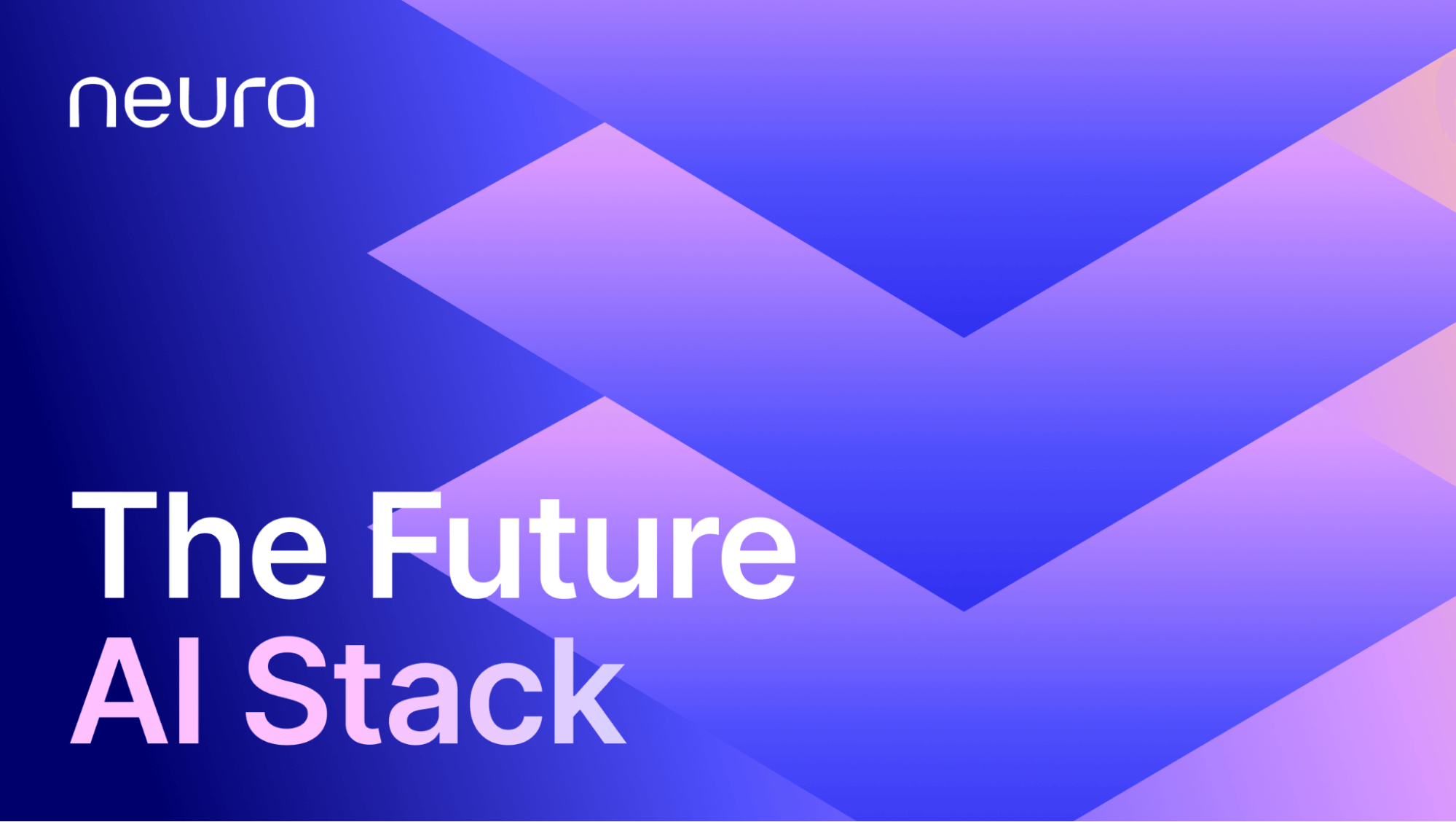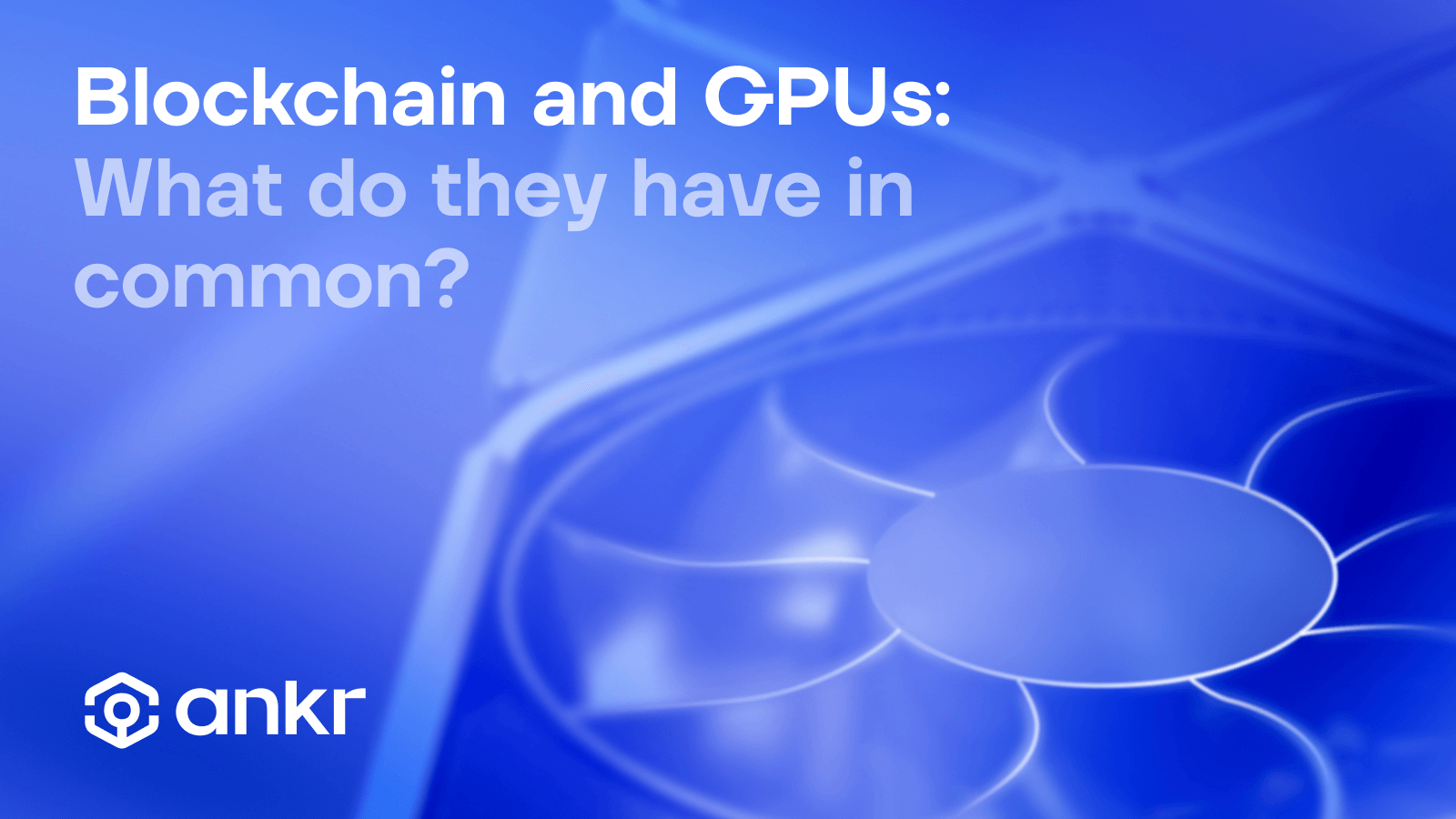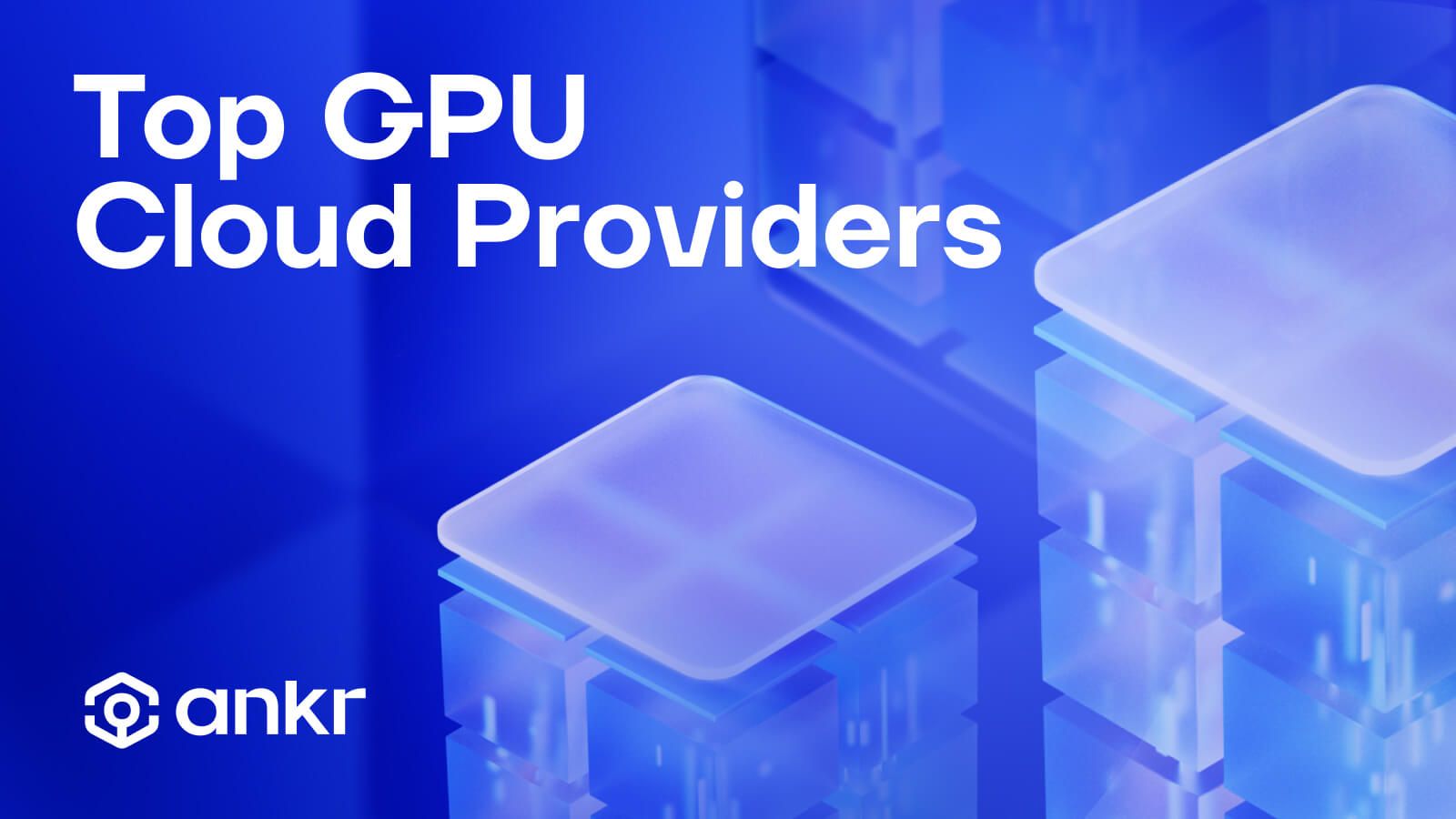The Ultimate Guide to Choosing the Best GPU for Deep Learning in 2024

Kevin Dwyer
August 20, 2024
5 min read

Why GPUs Reign Supreme in the World of Deep Learning
Deep learning, the engine powering today's most advanced AI, thrives on massive computational power. Graphics Processing Units (GPUs), originally designed for rendering graphics, have emerged as the heroes of this field. Their ability to perform numerous calculations simultaneously (parallel processing) perfectly aligns with the demands of training complex neural networks on vast datasets. This acceleration is a game-changer, drastically reducing training times and enabling breakthroughs that were once unimaginable.
Decoding the GPU Landscape: Key Factors for Deep Learning Success
Selecting the best GPU for deep learning is a strategic decision that hinges on various factors:
GPU Memory (VRAM): Fueling Your Deep Learning Engine
Think of VRAM (Video Random Access Memory) as the fuel tank for your deep learning projects. It stores your model, datasets, and intermediate calculations. The more complex your model and larger your datasets, the more VRAM you'll need to avoid performance bottlenecks. Here's a quick guideline:
- 8GB VRAM: Suitable for smaller models and datasets, ideal for beginners.
- 16GB VRAM: A sweet spot for most mid-range deep learning tasks.
- 24GB or more: Essential for large models, high-resolution images, and complex architectures.
Compute Performance: The Powerhouse of Deep Learning
Compute performance is the muscle behind your GPU's speed. It's determined by several factors:
- CUDA Cores: NVIDIA's general-purpose parallel processing cores. More cores generally translate to faster performance.
- Tensor Cores: Specialized cores designed to accelerate matrix operations, the backbone of deep learning.
- Architecture: Newer architectures often offer better performance and efficiency.
Power Efficiency: Balancing Performance and Sustainability
High-performance GPUs can be power-hungry. Balancing power consumption with performance is crucial, especially if you're concerned about energy costs or your environmental footprint. Look for GPUs with good performance-per-watt ratios.
Price vs. Performance: Finding Your Sweet Spot
Deep learning GPUs span a wide price range. Set a realistic budget and prioritize the features that matter most to you. Remember, the most expensive GPU isn't always the best fit for your specific needs.
Software and Ecosystem Support: The Foundation of Your Workflow
Ensure compatibility with your preferred deep learning frameworks (e.g., TensorFlow, PyTorch) and the availability of well-maintained drivers and software tools. This will streamline your development process and ensure a smooth experience.
NVIDIA GPUs for Deep Learning: The 2024 Power Rankings
NVIDIA has cemented its position as the leading provider of deep learning GPUs. Let's explore their top contenders for 2024:
High-End Titans: Unleashing Unmatched Deep Learning Power
- NVIDIA H100: The undisputed champion for cutting-edge research and large-scale deployments. Boasts immense compute power, massive VRAM, and advanced features like Transformer Engine and Hopper architecture.
- NVIDIA A100: Still a formidable powerhouse, ideal for demanding workloads and large-scale models. Offers excellent performance and scalability.
Mid-Range Powerhouses: Balancing Performance and Affordability
- NVIDIA RTX 4090: A consumer-grade GPU with impressive deep learning capabilities. Offers a great balance of performance and price for serious enthusiasts and smaller teams.
- NVIDIA RTX 4080: A slightly more budget-friendly option that still delivers substantial power for deep learning tasks.
Entry-Level Workhorses: Getting Started with Deep Learning
- NVIDIA RTX 3060: A fantastic entry point for beginners and those with limited budgets. Provides ample power for learning the ropes and experimenting with smaller projects.
Cloud GPUs: Scaling New Heights in Deep Learning
Cloud GPUs offer unmatched flexibility and scalability for deep learning projects.
Leading Cloud GPU Providers
- Amazon Web Services (AWS): Extensive selection of NVIDIA GPUs, flexible pricing, and seamless integration with other AWS services.
- Google Cloud Platform (GCP): Offers NVIDIA GPUs and its own specialized Tensor Processing Units (TPUs), optimized for deep learning workloads.
- Microsoft Azure: Provides a range of NVIDIA GPUs and integrates well with Azure Machine Learning.
Advantages of Cloud GPUs
- Scalability: Easily scale resources up or down to match your project's demands.
- Flexibility: Experiment with different GPU configurations without upfront hardware investments.
- Accessibility: Access powerful GPUs from anywhere with an internet connection.
Finding Free or Discounted Cloud GPU Resources
Free Trials: Many providers offer free trials or credits to new users. Research Grants and Educational Programs: Look for opportunities that provide discounted access to cloud GPUs for research or educational purposes.
GPU Workstations and Servers: Powering Deep Learning Teams
When to Consider a GPU Workstation or Server
- Dedicated Deep Learning Teams: If you have a team focused on deep learning, a dedicated workstation or server ensures optimal performance and resource allocation.
- Large-Scale Projects: Demanding workloads require the horsepower of multiple high-end GPUs working in tandem.
- Complete Control: A dedicated setup gives you full control over your hardware and software environment.
Key Features to Look For
- Multiple GPUs: Support for multiple high-end GPUs to accelerate training and inference.
- Ample Storage: Sufficient storage capacity for large datasets and models.
- Robust Cooling: Efficient cooling systems to prevent overheating and maintain optimal performance.
Your Deep Learning GPU Decision Guide
Choosing the right GPU involves answering some key questions:
- What types of deep learning tasks will you be performing? (Image classification, natural language processing, etc.)
- What is your budget?
- Do you need scalability for future projects?
- Do you prefer a local setup or the flexibility of cloud computing?
Maximizing Your Deep Learning GPU: Tips and Tricks
Software Optimization: Unleashing Your GPU's Full Potential
- Deep Learning Frameworks: Leverage the power of CUDA, TensorFlow, PyTorch, and other frameworks optimized for GPU acceleration.
- Mixed Precision Training: Utilize lower-precision data types (e.g., FP16) to speed up training while maintaining accuracy.
Benchmarking: Putting Your GPU to the Test
Use standard benchmarks like MLPerf to compare the performance of different GPUs on your specific tasks.
Future-Proofing: Embracing the Next Generation of GPUs
Stay informed about the latest advancements in GPU architecture and software to ensure your investment remains relevant for years to come.
Conclusion: Empower Your Deep Learning Journey with the Perfect GPU
The right GPU is your gateway to unlocking the full potential of deep learning. Whether you're a researcher pushing the boundaries of AI, a developer building innovative applications, or a student eager to learn, the perfect GPU awaits to accelerate your journey.
Join the Conversation on Our Channels!
Twitter | Telegram | Discord | YouTube | LinkedIn | Instagram | Reddit | All Links
Similar articles.

Decentralized GPU: The Future AI Stack Explained Part One

Kevin Dwyer
May 2, 2024
e
AI has been (loudly) shaking up industries from healthcare to Web3 since ChatGPT presented the instantly usable application of generative AI to the mainstream. The...

Blockchain and GPU: Hardware Behind Decentralized Economies

Kevin Dwyer
May 15, 2024

Blockchain and GPUs: What do they have in common?
As a crypto enthusiast, you've heard about both blockchain technology and graphics processing units (GPUs). But...

Top 10 GPU Cloud Providers and a Decentralized Disruptor

Kevin Dwyer
July 3, 2024

Artificial intelligence (AI) has become the driving force behind innovation across various industries. From powering self-driving cars to revolutionizing medical diagnostics and creating life-like special...



